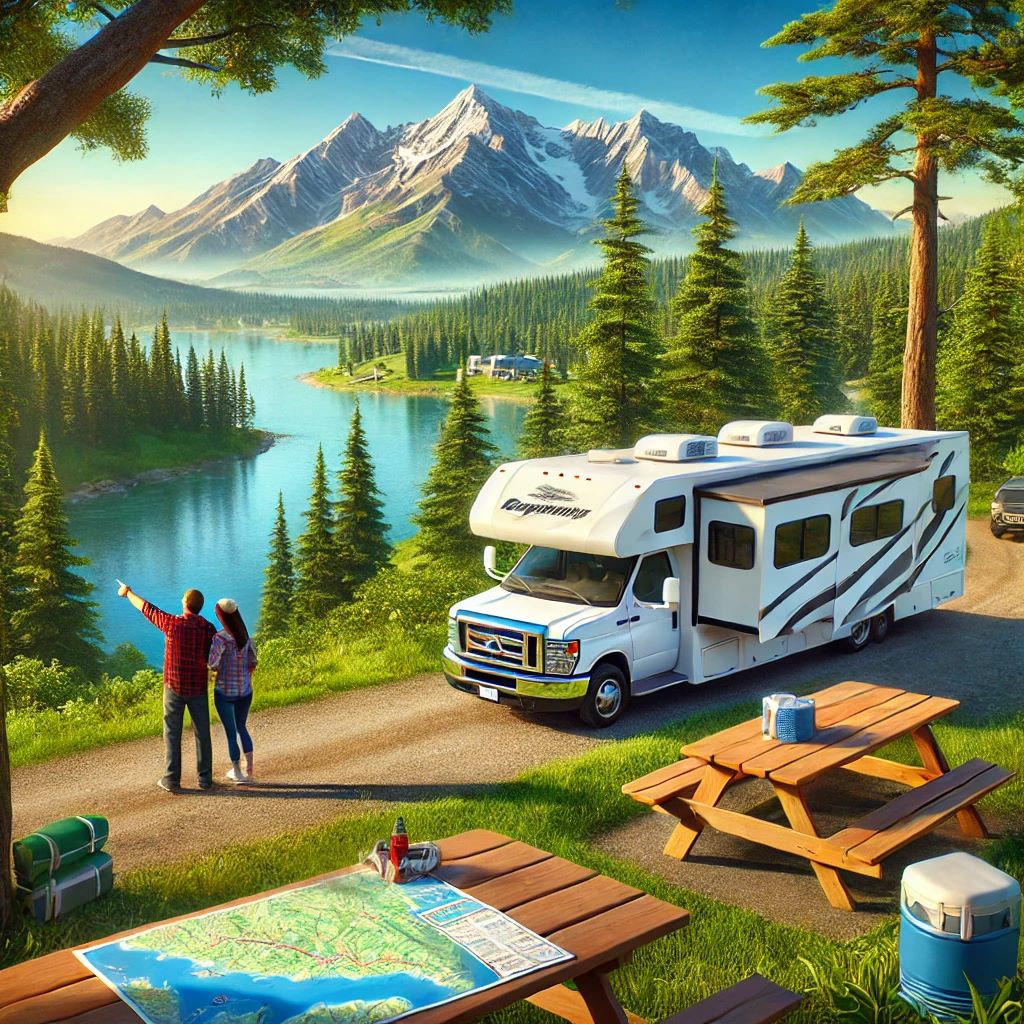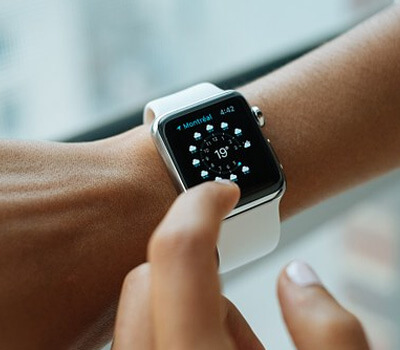
Summer is the season for camping, road-tripping, beach vacations, and all kinds of sunny-day activities.
But at the end of the day, you might find yourself turning red from a nasty sunburn.
We usually don’t feel these burns in the moment, so we may not realize how bad it is until it’s too late. That’s why every RVer needs to know how to prevent sunburn.
Sunburns are not only painful, they can also be quite dangerous. Many types of skin cancer can be linked to sunburns and UV radiation.
So preventing these burns is good for your short-term comfort … and long-term health. Don’t be fooled into thinking a little burn can’t hurt you.
Fortunately, there are several strategies you can use to protect your skin. With just a bit of forethought, you can avoid almost every issue.
Follow along with the tips below if you want to know how to prevent sunburn this summer.
Apply Sunscreen
Sunscreen is the most important preventative measure to take if you plan on spending time outdoors.
Sunscreen provides a protective layer against UV rays, and it comes in many forms. Whether you prefer a spray or a lotion, you need to be thorough as you apply it.
Another important factor to consider is the SPF (sun protection factor). Sunscreen provides different levels of protection based on the SPF rating.
In general, you should look for a product that has an SPF of 30 or higher. This will provide lasting protection, although it’s better to go for a higher rating if possible.
The highest level you can reach is 100 SPF, but not everyone needs something this strong.
Products like this aren’t always great for sensitive skin, so you may want to find a moisturizing option.
Expiration dates also make a difference! You shouldn’t just grab something out of your cabinet and assume it will work. Expired sunscreen won’t be as effective.
Additionally, it might smell strange and have an unpleasant texture.
Finally, make sure you reapply sunscreen on a regular basis whenever you’re outside. The general guideline is to add a new layer every 2 hours.
The sweat and oil in your skin can eventually make it wear off, so it’s important to apply fresh coats.
Wear Concealing Clothing
Not everyone likes to wear sunscreen. It can leave a sticky residue, and it’s hard to stay on schedule for reapplication.
You should still treat any exposed skin, but wearing concealing clothing is another way to prevent sunburn.
The more covered you are, the less likely you are to develop a sunburn.
Of course, nobody really wants to wear sweaters during the summer! Fortunately, there are plenty of lightweight alternatives you can consider.
For example, linen clothing is a good warm-weather material because it’s light and breathable.
If you wear full pants and long-sleeved shirts, you won’t have to worry about covering your limbs with sunscreen.
You should also consider the color of your clothing. Everyone knows that black absorbs heat, so stay away from dark colors if you want to avoid heatstroke!
Light colors are your best friend because they will deflect heat.
Cover Your Head
On a similar note, you shouldn’t forget about your head and face! Burns are always unpleasant, no matter where they appear on your body.
But a facial sunburn tends to hurt the most because of how often you move your face. Plus, they’re extremely noticeable!
In order to protect your face, try wearing a hat. There are countless styles and designs to choose from, so you can definitely find an option that suits your personality.
You should still use plenty of sunscreen to cover your face, neck, and ears though.
Even the best hat can leave a few gaps for sunlight to get through, especially if you’re at an odd angle.
If hats aren’t your style, you still need to protect your scalp and head.
You can still get a sunburn on your scalp, especially if you have bald patches or a clearly-defined part in your hair.
Obviously, you won’t want to rub sunscreen into your hair, but a spritz from a spray-on product will get the job done.
If you have long hair, you can also wear a ponytail or a similar hairstyle to cover up any exposed patches on your head.
There are plenty of ways to prevent sunburn, so try a few of the options above.
Wear UV-Resistant Lip Balm
Another potential problem area is your lips.
These are made from a different type of skin compared to the rest of your face, so regular sunscreen can’t always get the job done.
Plus, who wants to taste sunscreen on their lips? Not me!
Your lips can still become burned and cracked though. It’s very painful to get a sunburn on this part of your face.
Luckily, you can prevent burns by wearing a coating of UV-resistant lip balm. This is essentially a specialized type of sunscreen for your lips.
It moisturizes the skin and protects it from sun damage.
Lip balm is a nice solution because it’s easy to carry around in your pocket and reapply anytime you feel your lips drying out.
Aquaphor Lip Repair Ointment is a great option for anyone who wants to spend time outdoors.
Stay in the Shade
Although sun exposure is dangerous, it’s easy to counteract. A thin layer of clothing can get the job done just fine!
But if you want to take away some of the risk, try to stick to the shade whenever you’re outside. This is easy in an RV because most models come with large awnings!
You’ll always have a nice spot where you can sit outside and relax.
You can also prevent sunburn if you camp in areas with heavy tree cover. Keep your eyes open for pavilions, clubhouses, and other shady places as well.
If you limit your time in the open sunlight, you’re less likely to develop a sunburn.
Avoid Peak Sunlight Hours
Just because the sun is out doesn’t mean that you’ll get burned! There are peak times throughout the day when UV radiation is at its strongest.
This fluctuates throughout the year, but the most dangerous times for sunburns are between 10 am and 4 pm.
You should try to plan activities around this window if possible. If you need to do some outdoor chores in the morning, try to wrap up before 10 am.
Likewise, the best time for a sunscreen-free stroll is during the evening hours.
It’s also a good idea to avoid physical activity in the heat of the day anyway. Be extra careful if you’re out during these prime hours.
Make sure you drink plenty of water, cover your skin, and apply sunscreen on a regular basis.
Take Sunburns Seriously
Finally, it’s important to not get complacent about sunburn prevention. These burns can cause serious skin damage and might even lead to cancer.
It’s easy to overlook the importance of skincare, especially if you haven’t dealt with a burn in a while.
There are some everyday practices to keep in mind. First of all, don’t use tanning beds. These can damage your skin and lead to serious long-term consequences.
The same advice applies to intentional tanning methods! Never let yourself burn on purpose for the sake of a tan.
Next, remember that you can still get a sunburn even on cloudy days! It’s less likely, but you should still take preventative measures to protect yourself.
Make sunscreen a regular part of your daily routine. There are plenty of products that are effective without making you feel greasy or uncomfortable.
Finally, be extra vigilant about sunscreen when you’re dealing with snow or water.
The reflection on the surface can lead to serious burns, even if you’re wearing a hat to protect you from overhead rays.
Additionally, the glare off of snow can burn you, so you’re not safe during the winter either. Constant protection is the goal!
Related Articles:
The post How to Prevent Sunburn While RV Camping This Summer appeared first on RV LIFE.










